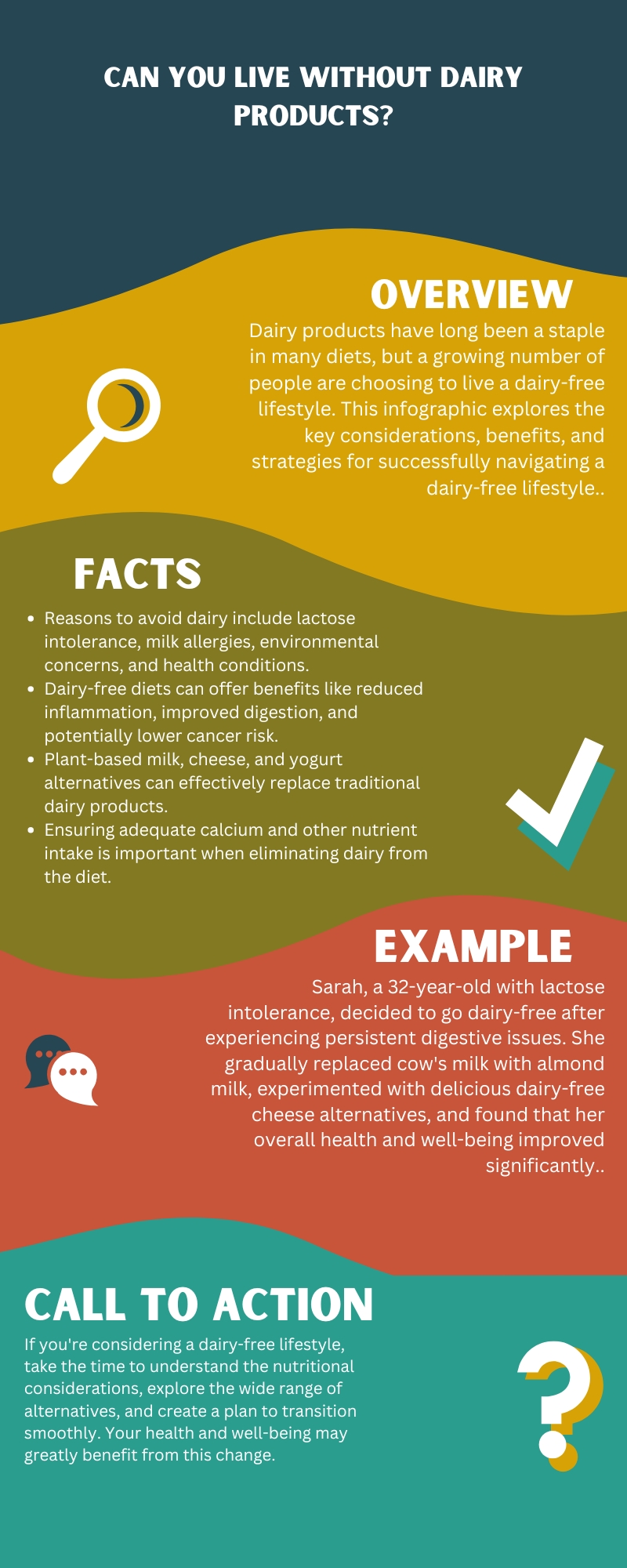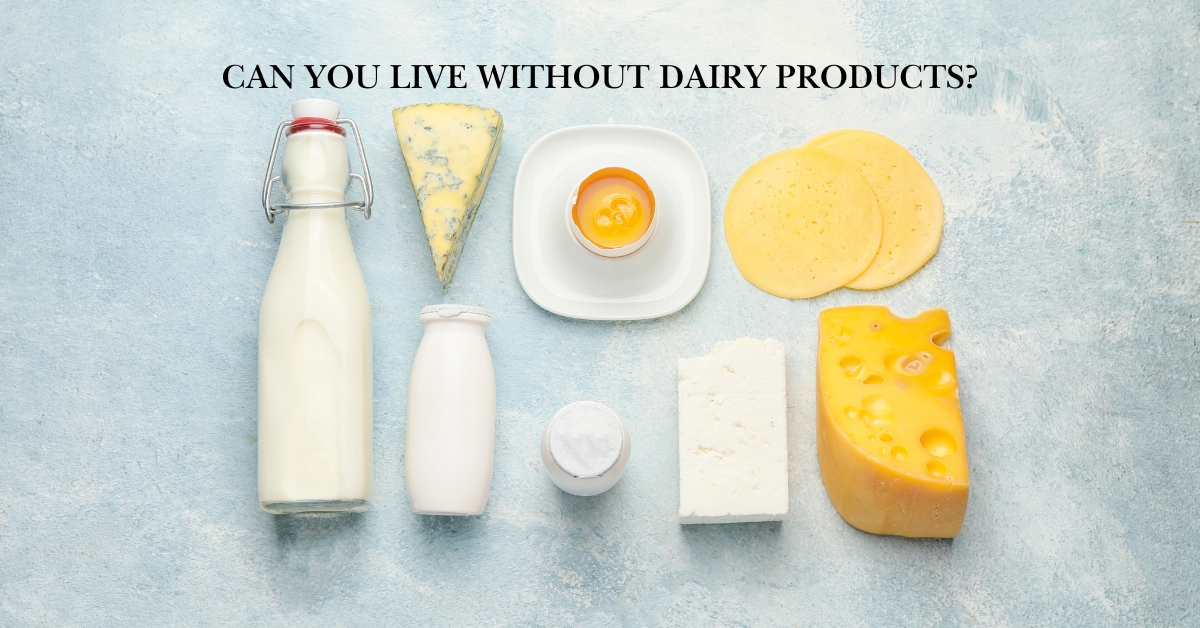Dairy products have long been a staple in many diets worldwide, but there has been a growing trend towards dairy-free living in recent years.
Whether it’s due to lactose intolerance, ethical concerns, or a desire for a healthier lifestyle, more and more people are questioning whether they can live without dairy products.
Yes, you can live without dairy products. Dairy is not essential for survival, as nutrients like calcium, protein, and vitamin D are available in other foods, such as leafy greens, nuts, seeds, fortified plant-based milks, and fish. Many people thrive on dairy-free diets without negative health effects.
In this blog article, we’ll explore the ins and outs of a dairy-free lifestyle, from understanding the nutritional value of dairy to discovering delicious alternatives and navigating the challenges of transitioning away from dairy.
Key Takeaways:
- Dairy products are a valuable source of nutrients like protein, calcium, and vitamins, but some people may need to avoid them due to lactose intolerance, allergies, environmental concerns, or health reasons.
- Adopting a dairy-free diet can offer benefits like reduced inflammation, improved digestion, and potentially lower risk of certain cancers.
- There are many delicious plant-based milk, cheese, and yogurt alternatives that can replace dairy products in your diet.
- Transitioning to a dairy-free lifestyle requires patience, label reading, and finding support, but can be made easier by gradually reducing dairy and discovering new dairy-free recipes.
- Ensuring adequate calcium and other nutrient intake is important when eliminating dairy, which can be achieved through fortified alternatives and a balanced plant-based diet.
- Dining out and traveling dairy-free can be managed by researching options, communicating your needs, and being prepared with your own dairy-free snacks and condiments.
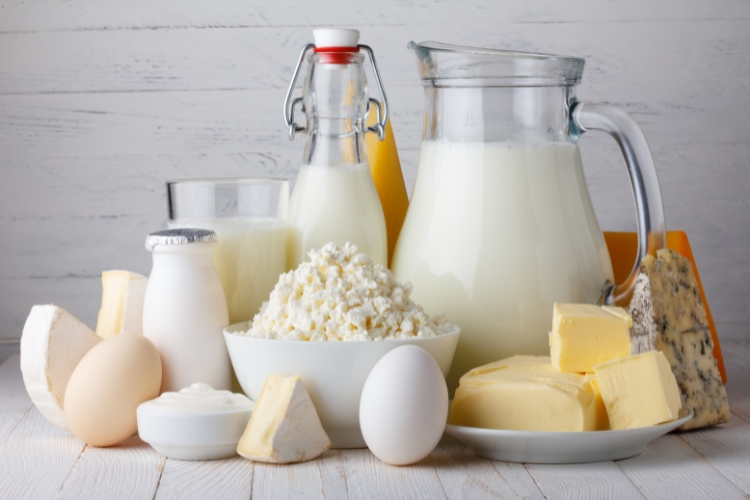
Understanding Dairy Products
1. What are Dairy Products?
Dairy products are foods derived from the milk of mammals, primarily cows, but also other animals such as goats, sheep, and even camels. Common dairy products include milk, cheese, yogurt, butter, and ice cream, among others. These products are known for their high protein, calcium, and vitamin content, making them an important part of many people’s diets.
2. Nutritional Value of Dairy Products
Dairy products are a valuable source of essential nutrients, including:
- Protein: Dairy products are a rich source of high-quality protein, containing all the essential amino acids.
- Calcium: Dairy is one of the best dietary sources of calcium, which is crucial for maintaining strong bones and teeth.
- Vitamins: Dairy products, especially milk, are a good source of vitamins A, B12, and riboflavin (B2).
- Minerals: Dairy provides other important minerals like phosphorus, potassium, and niacin.
However, it’s important to note that some people may have difficulty digesting or tolerating dairy products due to lactose intolerance or milk allergies.
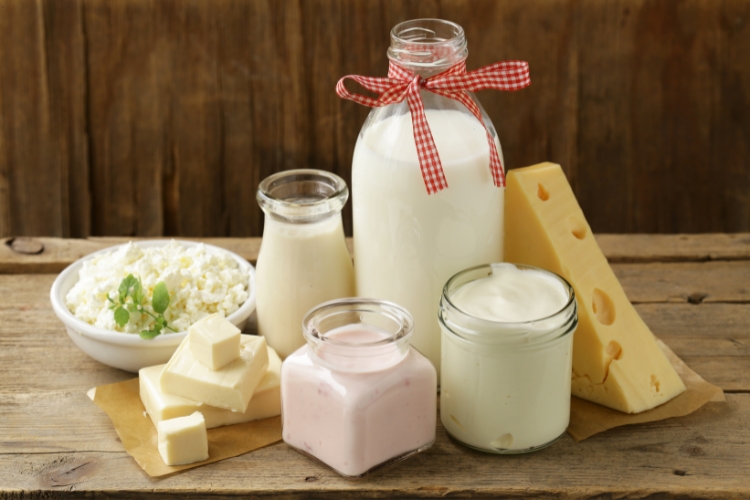
Living Without Dairy
1. Reasons to Avoid Dairy
There are several reasons why someone might choose to avoid dairy products, including:
- Lactose intolerance: This condition, caused by the inability to digest the sugar in milk, can lead to uncomfortable digestive symptoms like bloating, gas, and diarrhea.
- Milk allergies: Some people have an immune system reaction to the proteins in milk, leading to allergic symptoms like hives, eczema, or even anaphylaxis.
- Environmental concerns: The dairy industry has been criticized for its environmental impact, including greenhouse gas emissions, water usage, and land degradation.
- Ethical considerations: Some people choose to avoid dairy products due to concerns about the treatment of dairy cows and the separation of calves from their mothers.
- Health reasons: Eliminating dairy may be recommended for certain health conditions, such as acne, arthritis, or digestive disorders.
2. Health Benefits of a Dairy-Free Diet
Adopting a dairy-free diet can offer several potential health benefits, including:
- Reduced inflammation: Dairy products, especially cheese, can be high in saturated fat and pro-inflammatory compounds, which may contribute to conditions like arthritis or cardiovascular disease.
- Improved digestive health: Removing dairy can help alleviate symptoms of lactose intolerance and other digestive issues.
- Clearer skin: Some studies have suggested a link between dairy consumption and acne breakouts, potentially due to the hormones present in dairy products.
- Reduced risk of certain cancers: Some research indicates that limiting dairy intake may lower the risk of certain types of cancer, such as prostate cancer.
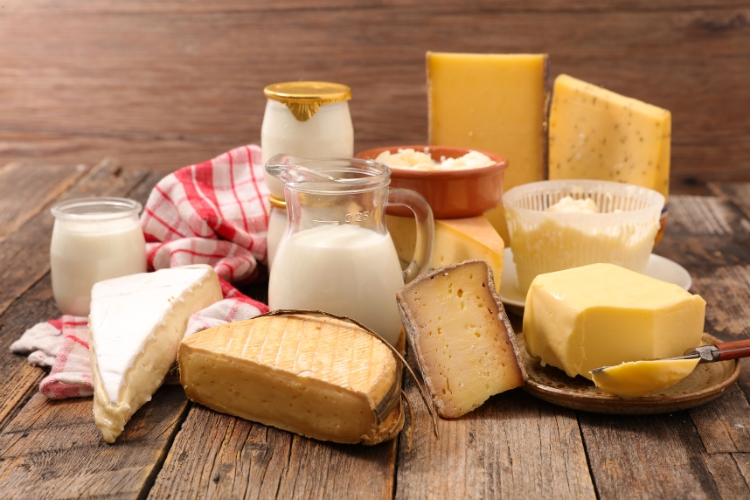
Alternatives to Dairy Products
1. Plant-Based Milk Alternatives
For those looking to avoid dairy, there are a variety of plant-based milk alternatives available, including:
| Milk Alternative | Nutritional Profile |
|---|---|
| Almond Milk | Lower in calories and fat, but lower in protein |
| Soy Milk | Similar protein content to cow’s milk, but is higher calories |
| Oat Milk | Creamy texture, a good source of fiber, and is relatively low in calories |
| Coconut Milk | Relatively high in fat, but low in protein |
| Cashew Milk | Smooth and creamy, low in calories and fat |
| Rice Milk | Hypoallergenic, but lower in protein and nutrients compared to other alternatives |
2. Dairy-Free Cheese and Yogurt Alternatives
In addition to milk alternatives, there are also a growing number of dairy-free cheese and yogurt products made from plant-based ingredients, such as:
- Nut-based cheeses (e.g., cashew, almond)
- Soy-based cheeses and yogurts
- Coconut-based yogurts
- Fermented nut or seed-based cheese alternatives
These dairy-free products aim to replicate the taste and texture of their dairy counterparts, making it easier for those following a dairy-free lifestyle to enjoy familiar foods.

Transitioning to a Dairy-Free Lifestyle
1. Tips for Successful Dairy Avoidance
Transitioning to a dairy-free lifestyle can be a significant change, but with the right approach, it can be a smooth and successful process. Here are some tips to help you along the way:
- Start slowly: Don’t try to eliminate all dairy products at once. Gradually reduce your intake and experiment with alternatives to make the transition easier.
- Read labels carefully: Dairy can be hidden in unexpected places, so be sure to check the ingredient list on all packaged foods.
- Explore new recipes: Embrace the opportunity to discover delicious dairy-free dishes and expand your culinary horizons.
- Find a support system: Connect with others following a dairy-free lifestyle, whether online or in your local community, for advice and encouragement.
- Be patient with yourself: Changing long-held dietary habits can be challenging, so don’t be too hard on yourself if you slip up occasionally.
2. Dealing with Dairy Cravings
One of the potential challenges of going dairy-free is managing cravings for familiar dairy products. Here are some strategies to help you navigate this:
- Satisfy the craving with a dairy-free alternative: Try plant-based milk, cheese, or yogurt that closely resembles the dairy product you’re craving.
- Distract yourself: When a craving strikes, engage in an activity that takes your mind off of the dairy product, such as going for a walk, calling a friend, or reading a book.
- Identify the underlying need: Sometimes, dairy cravings can be a sign that you’re missing a particular nutrient or feeling an emotional need. Addressing the root cause can help curb the craving.
- Be patient and persistent: Cravings can be strong at first, but they tend to diminish over time as your body adjusts to the dairy-free diet.
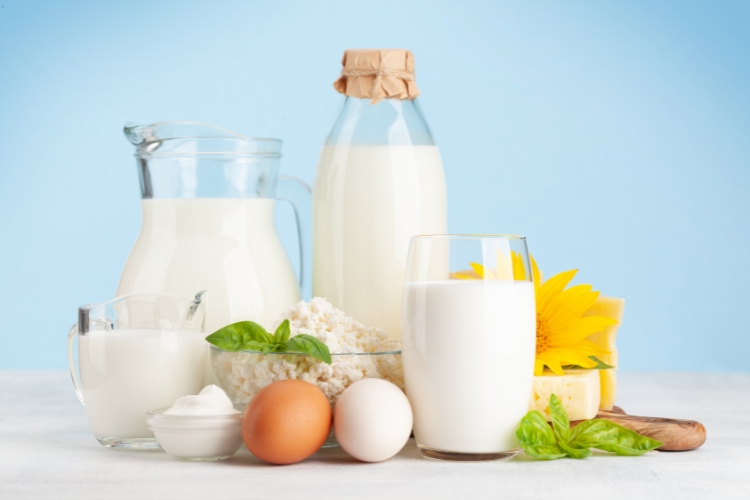
Nutritional Considerations
1. Ensuring Adequate Calcium Intake
One of the primary concerns when eliminating dairy is ensuring adequate calcium intake. Calcium is essential for maintaining strong bones and teeth, as well as supporting various bodily functions. To ensure you’re getting enough calcium on a dairy-free diet, consider the following:
- Incorporate calcium-fortified plant-based milk alternatives.
- Eat plenty of calcium-rich vegetables, such as leafy greens, broccoli, and bok choy.
- Consider taking a calcium supplement, especially if you’re not getting enough from your diet.
- Check the calcium content of your dairy-free cheese and yogurt alternatives.
2. Other Nutrient Considerations
In addition to calcium, there are a few other nutrients to be mindful of when following a dairy-free diet:
- Protein: Make sure to get enough protein from plant-based sources, such as beans, lentils, tofu, and nuts.
- Vitamin B12: This nutrient is primarily found in animal-based foods, so dairy-free individuals may need to supplement or consume B12-fortified foods.
- Vitamin D: Dairy products are a common source of vitamin D, so you may need to increase your exposure to sunlight or take a supplement.
- Omega-3 fatty acids: Consider incorporating omega-3-rich foods, like flaxseeds, walnuts, and algae-based supplements, to maintain a healthy fatty acid balance.
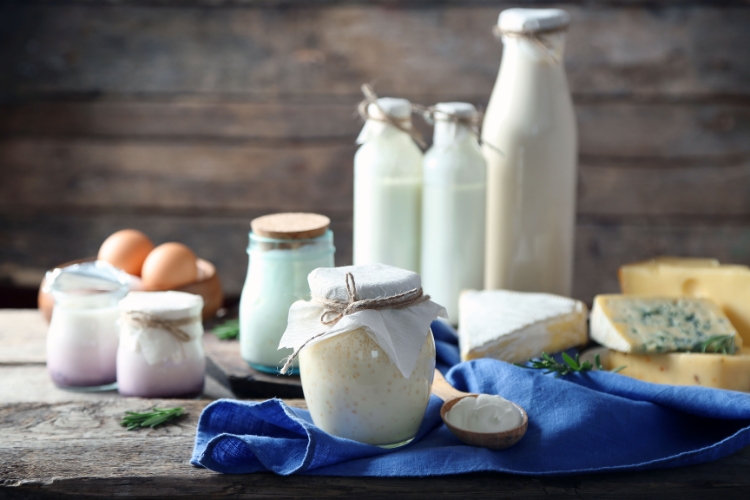
Dining Out and Traveling Dairy-Free
1. Navigating Restaurants and Cafes
Eating out can present some challenges when following a dairy-free diet, but with a little preparation and awareness, it’s entirely manageable. Here are some tips for navigating restaurant menus and cafe orders:
- Research restaurant options ahead of time and look for dairy-free-friendly establishments.
- Ask your server about the ingredients in dishes and request modifications to make them dairy-free.
- Be cautious of hidden dairy, such as in sauces, dressings, or baked goods.
- Seek out ethnic cuisines featuring dairy-free dishes, like Indian, Thai, or Mediterranean.
- Pack your dairy-free condiments or spreads to use if needed.
2. Tips for Traveling Dairy-Free
Traveling while following a dairy-free diet can be an adventure, but with some preparation, it can be an enjoyable experience. Here are some tips to help you navigate dairy-free travel:
- Research dairy-free options at your destination and plan to ensure you have access to suitable foods.
- Pack non-perishable dairy-free snacks and staples to have on hand.
- Communicate your dietary needs clearly with hotel staff, tour guides, and restaurant servers.
- Learn how to say “I’m dairy-free” in the local language to make it easier to communicate your needs.
- Be flexible and creative in finding dairy-free options, as they may not always be obvious on menus.
Conclusion
Navigating a dairy-free lifestyle may seem daunting at first, but with the right knowledge, preparation, and a willingness to explore new foods and recipes, it can be a rewarding and fulfilling experience.
By understanding the nutritional value of dairy products, the reasons for avoiding them, and the abundant alternatives available, you can confidently transition to a dairy-free lifestyle that supports your health, ethical beliefs, and overall well-being.
Remember, the journey is as unique as you are, so embrace the opportunity to discover new foods, connect with a supportive community, and find the dairy-free lifestyle that works best for you.
FAQs:
- What are the main reasons people choose to avoid dairy products?
The most common reasons for avoiding dairy include lactose intolerance, milk allergies, environmental concerns about the dairy industry, ethical considerations regarding the treatment of dairy animals, and health conditions that may be exacerbated by dairy consumption, such as acne, arthritis, or digestive disorders. - What are the potential health benefits of a dairy-free diet?
Adopting a dairy-free diet can offer several potential health benefits, including reduced inflammation, improved digestive health, clearer skin, and a lower risk of certain types of cancer. Eliminating dairy may also be beneficial for those with conditions like lactose intolerance or milk allergies. - What are some good alternatives to traditional dairy products?
There is a wide variety of plant-based milk alternatives, such as almond, soy, oat, coconut, and cashew milk. Additionally, there are numerous dairy-free cheese and yogurt alternatives made from ingredients like nuts, soy, and coconut. These products aim to replicate the taste and texture of their dairy counterparts. - How can someone successfully transition to a dairy-free lifestyle?
Transitioning to a dairy-free lifestyle requires patience and a gradual approach. Some tips include starting slowly, reading labels carefully to identify hidden dairy, exploring new dairy-free recipes, finding a supportive community, and being patient with yourself as you adjust to the changes. Managing cravings for dairy products can also be a challenge, but can be addressed through satisfying dairy-free alternatives, distractions, and addressing underlying needs.
